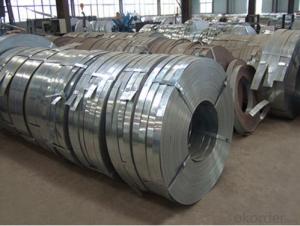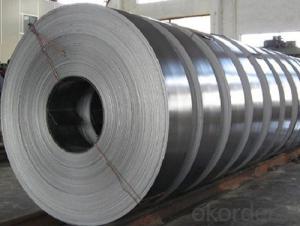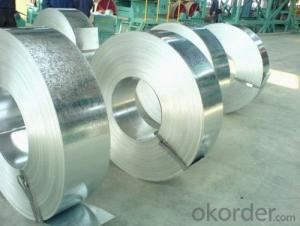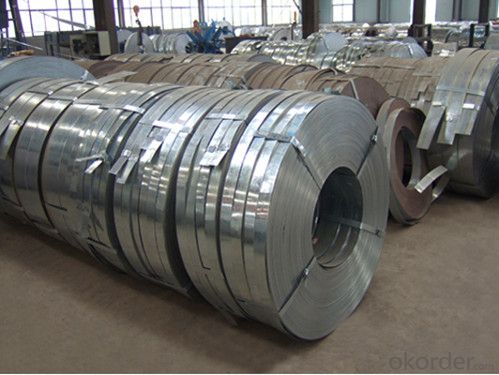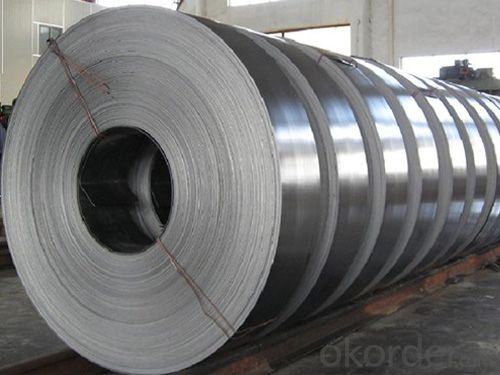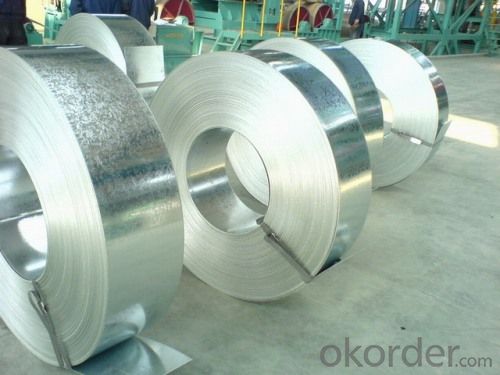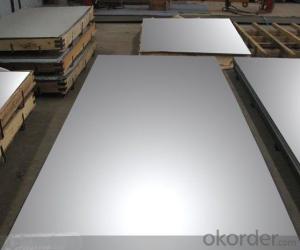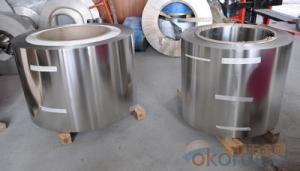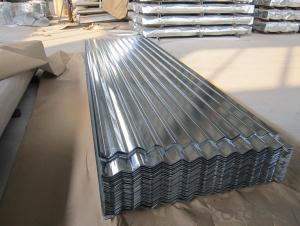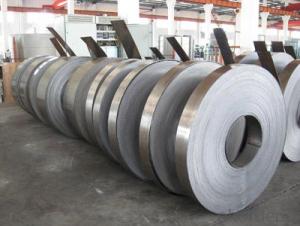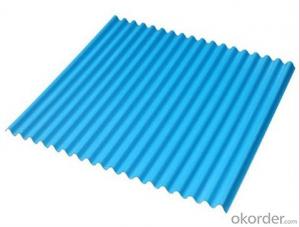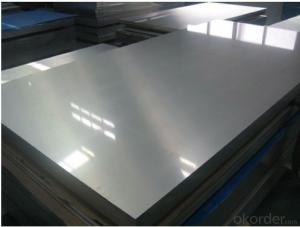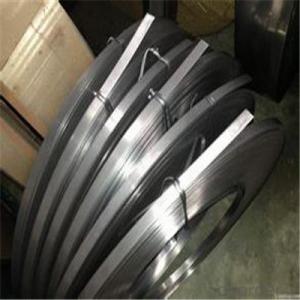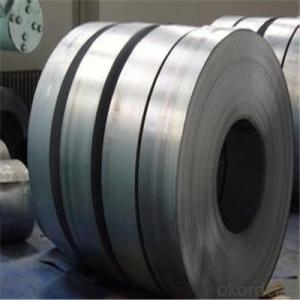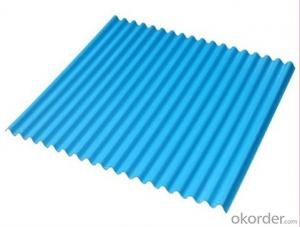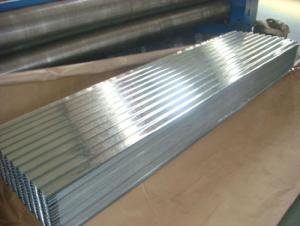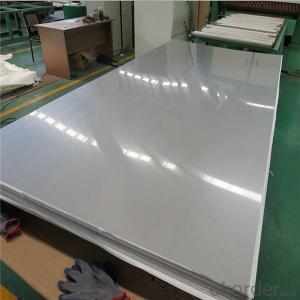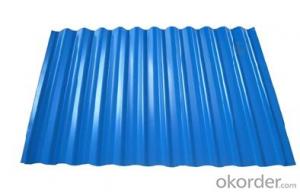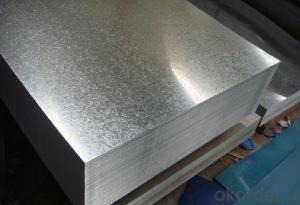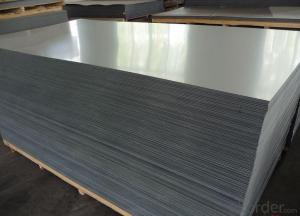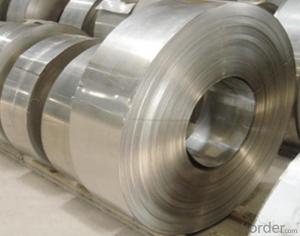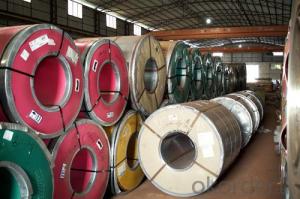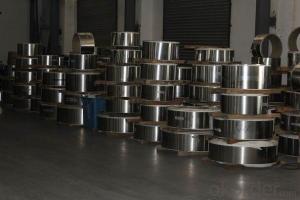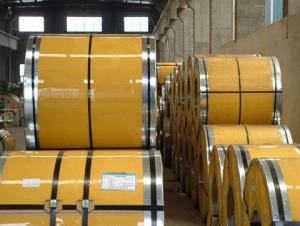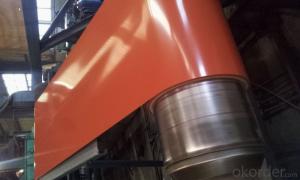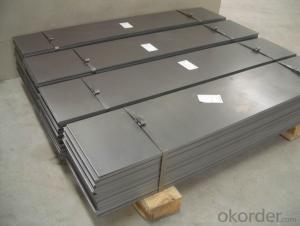Galvanized Steel Strip with High Quality-DX51D+Z 710*3.0mm
- Loading Port:
- China main port
- Payment Terms:
- TT OR LC
- Min Order Qty:
- 50 m.t
- Supply Capability:
- 10000 m.t/month
OKorder Service Pledge
OKorder Financial Service
You Might Also Like
Galvanized Steel Strip with High Quality-DX51D+Z 710*3.0mm
Product Description:
Specifications:
Thickness: 3.0mm
Width: 710mm
Material: DX51D+Z
ID: 508mm or 610mm
Spangle: Regular spangle or zero spangle
Surface treatment: chromated or no chromated; oiled or no oiled.
Advantages of Galvanized Steel Strip with High Quality-DX51D+Z 710*3.0mm:
1. Uniform coating;
2. Strong adhesion;
3. Strong corrosion resistant ability
Usage of Galvanized Steel Strip with High Quality-DX51D+Z 710*3.0mm:
1. Making pipes, like Greenhouse tubes, drinking water pipe, heating pipe, gas pipe and so on;
2. Used in automobile;
3. Used in construction;
4. Used in agriculture, fishery and so on.
FAQ of Galvanized Steel Strip with High Quality-DX51D+Z 710*3.0mm:
Q1: How soon can we receive the product after purchasement?
A1: Within three days of placing an order, we will begin production. The specific shipping date is dependent upon international and government factors, but is typically one month-two months.
Q2: How do you guarantee the quality of our products?
A2: We have established an advanced quality management system which conducts strict quality tests at every step, from raw materials to the final product. At the same time, we provide extensive follow-up service assurances as required.
Q3: The prices are invoicing on theoritical weight or on actual weight?
A3: We can do it in both manners, according to the customers' request.
Images of Galvanized Steel Strip with High Quality-DX51D+Z 710*3.0mm:
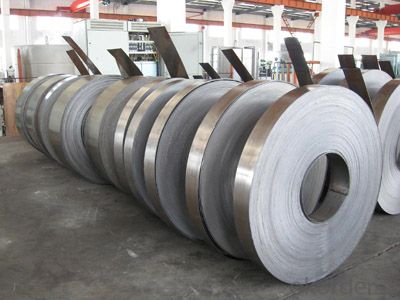
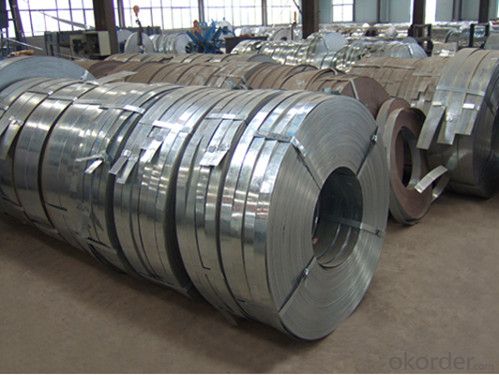
*If you would like to get our price, please kindly inform us the standard/material, specifications and quantity. Thank you very much for your attention.
- Q: What are the different surface protection options for steel strips?
- There are several surface protection options for steel strips, including galvanizing, coating with paints or lacquers, and applying protective films or tapes.
- Q: What are the different surface coating methods for steel strips?
- There are several different surface coating methods for steel strips, including hot-dip galvanizing, electro-galvanizing, zinc coating, tin coating, and organic coating. Each method has its own advantages and is used for specific applications to provide protection against corrosion, improve aesthetic appearance, or enhance the functionality of the steel strips.
- Q: Can steel strips be heat treated?
- Yes, steel strips can be heat treated. Heat treatment processes such as annealing, quenching, tempering, and hardening can be applied to steel strips to alter their mechanical properties and enhance their performance for specific applications.
- Q: How are steel strips cold rolled?
- Cold rolling is a process wherein steel strips are passed through a series of rollers at room temperature to decrease their thickness and enhance their surface finish. The initial stage involves cleaning the steel strip to eliminate any impurities or surface contaminants. Once cleaned, the strip is fed into rolling mills, comprised of rollers that gradually reduce its thickness. During the cold rolling process, the rollers work in pairs, consisting of a work roll and a backup roll. The work roll applies pressure to the strip, while the backup roll provides support and maintains the desired shape. These rolls are typically constructed from high-quality steel or other durable materials capable of withstanding the forces and pressures involved. As the strip progresses through the rolling mills, it experiences successive reductions in thickness. The distance between the rollers diminishes gradually, resulting in compression and elongation of the strip. This reduction in thickness enhances the mechanical properties of the steel, including its strength and hardness. Furthermore, the cold rolling process enhances the surface finish of the steel strip. The pressure applied by the rollers smooths out any surface imperfections and defects, yielding a more uniform and sleeker surface. To ensure precision and consistency, the cold rolling process employs various control systems and measurements. These include gauges and sensors that monitor the dimensions, temperature, and other parameters of the strip as it passes through the rolling mills. In summary, cold rolling is a crucial step in steel strip production. It refines the steel's properties, such as thickness, strength, and surface finish, making it suitable for a diverse range of applications in industries such as automotive, construction, and manufacturing.
- Q: Can steel strips be coated with protective coatings?
- Protective coatings can be applied to steel strips, which is a common practice in different industries to improve their durability, resistance to corrosion, and overall performance. There are multiple types of protective coatings available for steel, including galvanized coatings, powder coatings, epoxy coatings, and paint coatings, among others. For instance, galvanized coatings involve the application of a layer of zinc to the steel strip through hot-dip galvanizing. This coating offers exceptional corrosion resistance and shields the steel from moisture and chemicals present in the environment. Another popular option is powder coatings, where a dry powder is electrostatically applied to the steel strip and then cured under heat to create a durable and strong coating. Powder coatings provide excellent adhesion and resistance to abrasion, impact, and chemicals. On the other hand, epoxy coatings are commonly used in harsh environments to protect steel strips. These coatings are highly resistant to chemicals, moisture, and extreme temperatures. They offer an additional layer of protection, preventing corrosion and extending the steel strip's lifespan. Paint coatings are also widely used for the protection of steel strips. These coatings can be applied using different methods such as spraying, brushing, or dipping. Paint coatings provide flexibility in terms of color options and can offer a decorative finish while safeguarding the steel strip from corrosion and other damaging factors. In summary, steel strips can be coated with a variety of protective coatings to enhance their performance and lifespan. The choice of coating will depend on the specific requirements of the steel strip and the environment in which it will be exposed.
- Q: What is the difference between hot rolling and cold rolling of steel strips?
- The main difference between hot rolling and cold rolling of steel strips lies in the temperature at which the rolling process takes place. Hot rolling involves heating the steel to high temperatures, typically above its recrystallization temperature, and then passing it through a series of rollers to shape it into the desired form. This process makes the steel more malleable and allows for the production of larger and thicker steel strips. On the other hand, cold rolling occurs at room temperature or slightly below. The steel is passed through rollers, often multiple times, to reduce its thickness and improve its surface finish. Cold rolling results in a harder and stronger steel strip compared to hot rolling, as the cooling process during rolling causes the creation of strain hardening. This makes cold-rolled steel strips suitable for applications that require higher strength and precision, such as automotive parts and electrical appliances.
- Q: Can steel strips be used in the renewable energy sector?
- Yes, steel strips can be used in the renewable energy sector. Steel strips are commonly used in the construction of wind turbines, solar panel frames, and other renewable energy infrastructure. They provide structural support, durability, and resistance to corrosion, making them an ideal choice for various applications in the renewable energy sector.
- Q: How are steel strips heat-treated for improved strength?
- Steel strips are heat-treated for improved strength through a process called quenching and tempering. In this process, the steel strip is heated to a high temperature and then rapidly cooled by immersing it in a quenching medium, such as oil or water. This rapid cooling hardens the steel, making it stronger but also more brittle. To reduce brittleness and improve ductility, the hardened steel strip is then reheated at a lower temperature and cooled slowly, a process known as tempering. This tempering process helps to relieve internal stresses while maintaining the desired strength, resulting in improved mechanical properties of the steel strip.
- Q: How do steel strips perform in extreme weather conditions?
- Steel strips perform well in extreme weather conditions due to their high strength and durability. They have excellent resistance to corrosion, making them suitable for withstanding harsh elements such as heavy rain, snow, and extreme temperatures. Additionally, steel strips are less prone to warping or cracking, ensuring their performance remains consistent even in challenging weather conditions.
- Q: What are the storage guidelines for steel strips?
- The storage guidelines for steel strips are important to ensure their longevity and prevent any damage. Firstly, it is crucial to store steel strips in a dry and well-ventilated area to avoid moisture accumulation and subsequent corrosion. The storage location should be free from any exposure to direct sunlight, as prolonged exposure can lead to discoloration and degradation of the steel's surface. Moreover, steel strips should be stored in a horizontal position, either stacked or on racks, to prevent any bending or warping. It is advisable to place wooden or rubber spacers between layers to provide support and avoid any contact between the strips, which could potentially cause scratching or other forms of surface damage. When stacking steel strips, it is necessary to ensure that the weight is evenly distributed to prevent any excessive pressure on the lower strips. Additionally, the strips should be stored away from any chemicals or substances that may cause staining or chemical reactions with the steel. Regular inspections should be conducted to identify any signs of rust or damage. If any issues are detected, appropriate measures should be taken, such as cleaning, applying rust inhibitors, or seeking professional assistance. By following these storage guidelines, steel strips can be preserved in optimal condition, ensuring their quality and performance when used in various applications.
Send your message to us
Galvanized Steel Strip with High Quality-DX51D+Z 710*3.0mm
- Loading Port:
- China main port
- Payment Terms:
- TT OR LC
- Min Order Qty:
- 50 m.t
- Supply Capability:
- 10000 m.t/month
OKorder Service Pledge
OKorder Financial Service
Similar products
Hot products
Hot Searches
Related keywords
